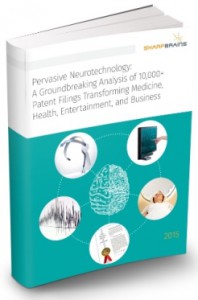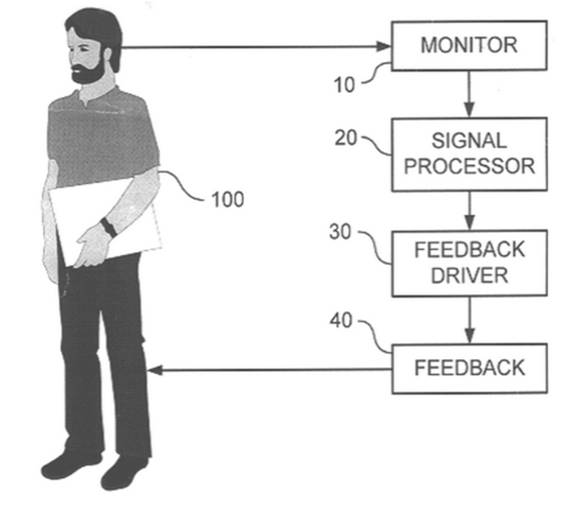Improving driving safety with alarms triggered by impending sleep state, detected via brain signals: Key Neurotech Patent #11
As mentioned, we are featuring a foundational Pervasive Neurotech patent a day, from older to newer by issue date. Today we are sharing a 2002 patent core to the field of driving safety.
U.S. Patent No. 6,497,658: Alarm upon detection of impending sleep state
- Inventor(s): Michael F. Roizen, Lawrence J. Gottlieb, Avery Tung
- Technology Category: EEG
- Issue Date: December 24, 2002
SharpBrains’ Take:
The ‘658 patent presents EEG technology applied to the field of sleep, with an application geared less towards improved sleep states and more towards increased vigilance during awake but sleepy states that may be necessary for example with vehicle operators. The background of the specification systematically reviews related disclosures in the field of sleep vigilance — both EEG and non-EEG based — and identifies shortcomings in the prior art that are addressed with teachings of the ‘658 patent. Such shortcomings include aspects related to the lack of real-time wakefuleness monitoring and physical apparatuses that may be cumbersome to the wearer of the device. Despite a specification with only one page of illustrations (that has two figures) and only four pages of written material, the presentation of an important EEG application (e.g., wakefulness vigilence) and seven independent claims (out of a total of 22 claims) are amongst the factors making the ‘658 patent a key non-invasive neurotechnology patent.
Abstract:
The present invention monitors a physiological process intrinsic to humans and which measures directly the approach of a sleep state. When sleep onset is detected, the subject is restored to a fully awake state by an alert mechanism. Sleep onset is determined by monitoring EEG and EMG signals of the subject with a bi spectral index monitor and applying an analysis algorithm to the index values output by the monitor. As a person tires, the value of their bi spectral index begins to drop and then oscillate back and forth between two discrete levels. This pattern is consistent among various subjects and indicates an early warning of impending sleep, before a dangerous loss of vigilance has occurred.
Illustrative Claim 1. A method of detecting sleep onset and preventing sleep, the method comprising:
- placing a plurality of contact leads on a subject that detect electroencephalogram (EEG) data;
- transmitting the EEG data to a processing device;
- analyzing the EEG data for a sleep onset condition by deriving numerical index values indicative of wakefulness of the subject and assessing at least one of: the number of level transitions of the numerical index values per unit time, and the length of time spent at or below the lower value of a predetermined transition range; and
- alerting the subject when an sleep onset condition is detected.
 To learn more about market data, trends and leading companies in the digital brain health space –digital platforms for brain/ cognitive assessment, monitoring and enhancement– check out this market report. To learn more about our analysis of 10,000+ patent filings, check out this IP & innovation neurotech report.
To learn more about market data, trends and leading companies in the digital brain health space –digital platforms for brain/ cognitive assessment, monitoring and enhancement– check out this market report. To learn more about our analysis of 10,000+ patent filings, check out this IP & innovation neurotech report.



